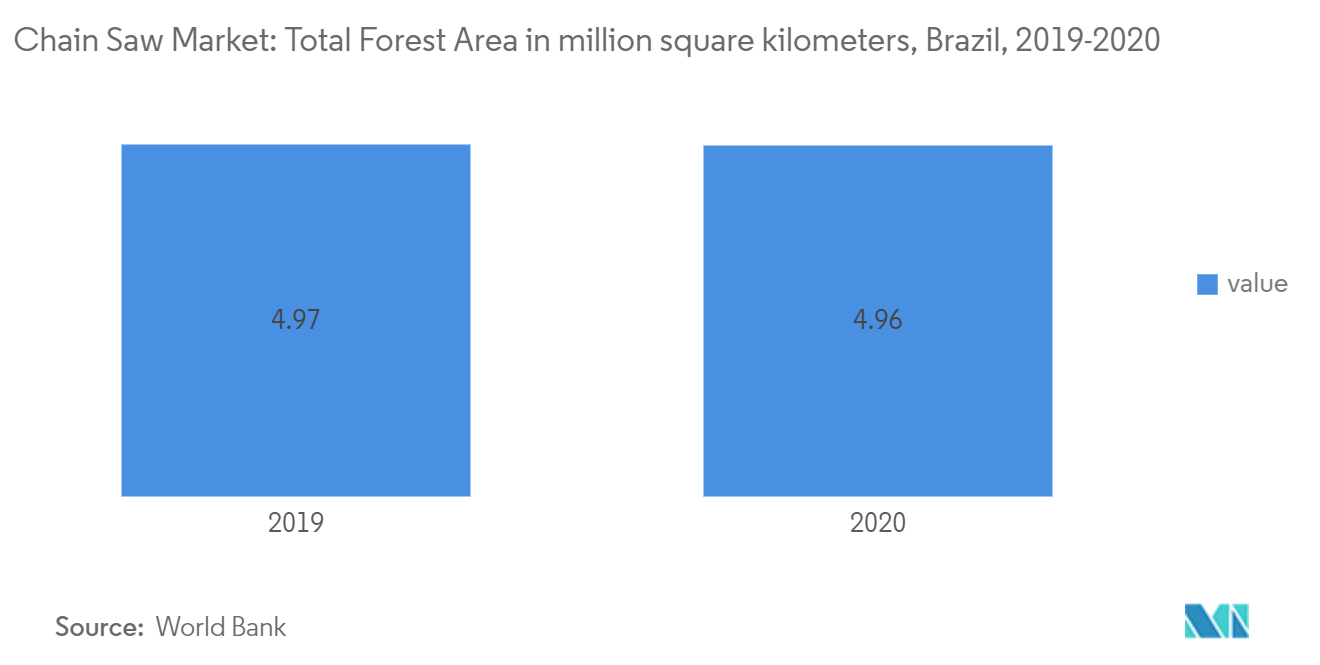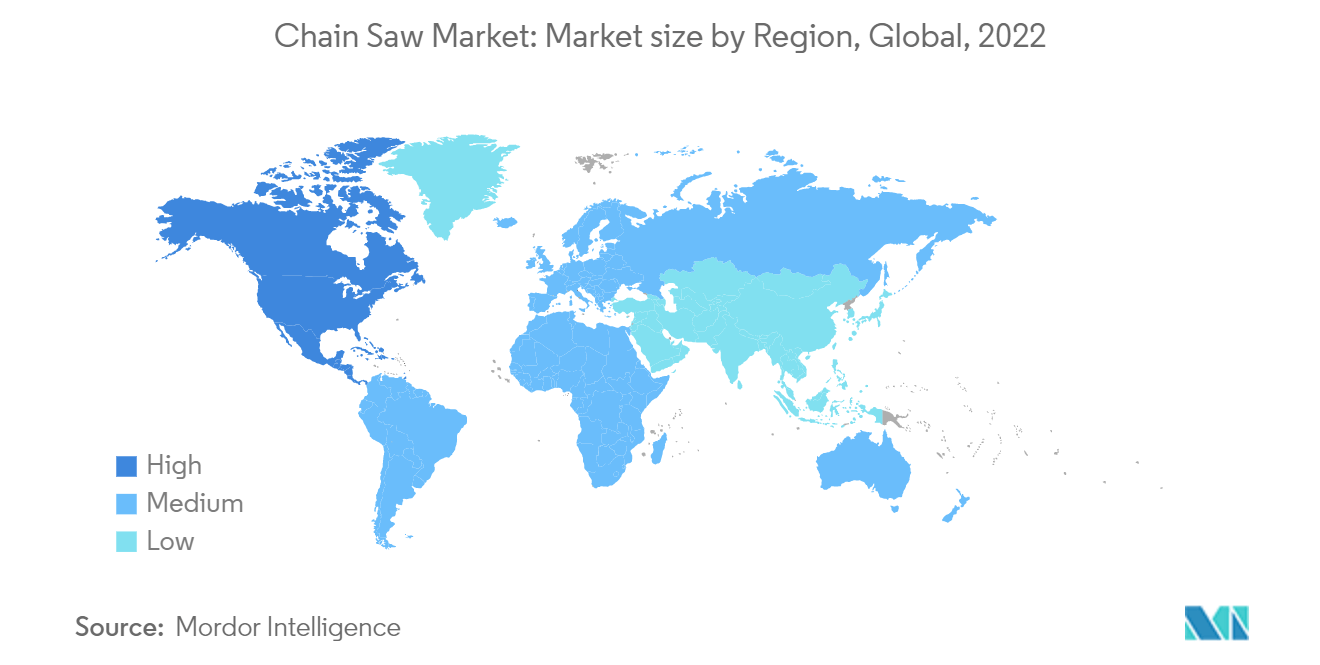Market Trends of Chain Saw Industry
Increasing Deforestation and Demand for Commodities and Shelter
The world's population is increasing daily, and this increase in population is leading to increases in deforestation. Also, increased demand for soybeans, palm oil, and wood products leads to deforestation. The demand is driven by the growing population worldwide. Obtaining these agricultural commodities require the clearing of forests to create arable land. Increased production of these commodities in Brazil, Colombia, and Indonesia has resulted in deforestation. Demand for products such as meat and milk has also expanded the grazing land by clearing forest areas. The demand for chainsaws as a tool for bucking, cutting, and felling trees is expected to increase globally due to increased deforestation activities.
The past decade has seen a massive increase in deforestation due to the increasing demand for commodities and shelter worldwide. Brazil has been leading the world in terms of deforestation. The increased use of wood in the manufacture of furniture, the production of pulp, and the construction of houses stimulate the demand for chainsaws. This increase in deforestation is because of the increasing population growth of the world, which has ultimately increased the demand for homes and shelter.
In 2020, the forest area in Brazil was 4.96 million sq. km, which has decreased since a decade. Thus, the market will likely witness considerable growth during the forecast period due to the increased demand from sectors such as construction.

North America Dominates the Chainsaw Market
North America witnessed the largest market share in 2021, which is expected to grow at a significant rate in the coming years. Companies in the chainsaw market are increasingly expanding and launching new products in the North American region owing to the rising demand. For instance, Husqvarna launched its new product line, including two new 70cc saws, two redesigned 50cc saws, gas-powered tree care saws, and some new equipment essentials. It expanded its line of X-Cut chainsaw chains in North America. According to the National Association of home builders, 90% of North American homes are made up of wood. North Americans' choice of wood shelter is due to the reason that wood is considered to be relatively lightweight. It is one of the strongest materials in the market and even outperforms steel. Wood is one of the best materials to support its weight, which means that lesser support is necessary for certain building designs.
According to NAHB analysis of 2021 Census Bureau 2021, 92% of new homes were wood-framed, another 7% were concrete-framed, and less than half a percent were steel-framed. In America, wood is quite cheaper than concrete or masonry for the construction of homes. Wooden frames are known to perform well during extreme storms, especially when they are well constructed. One of the reasons Americans choices for houses made up of wood is due to the low taxes. Taxes on homes built with wood can be considerably lower than on houses built with other materials. Wood is also a good thermal insulator. Wooden products are known to have lower embodied energy while also isolating heat from cold. Due to this reason, buildings that are made from wood usually remain quite warm even during the coldest periods. Heavy snowfall in the North American region has increased the use of firewood, ultimately increasing the demand for chain saws in residential areas. Such factors have improved the use of wood for making homes and shelters and, thus, are expected to drive the chainsaw market during the forecast period.

